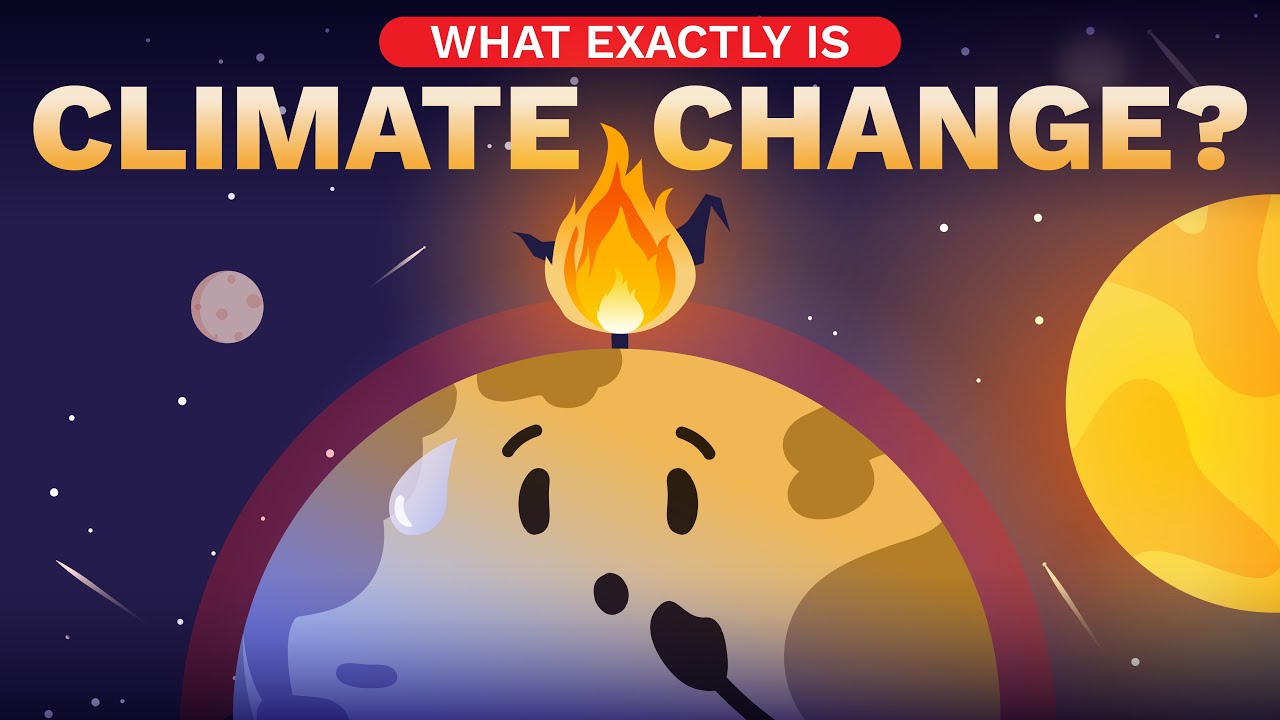Material on Global Warming Part 2 | Positive and Negative Impacts of Global Warming
Summary
TLDRThis video delves into the critical issue of global warming, explaining its causes, effects, and potential solutions. It discusses the role of greenhouse gases, including carbon dioxide and methane, in trapping heat and raising Earth's temperature. The video highlights the major human activities contributing to global warming, such as fossil fuel consumption, deforestation, and agriculture. It also explores the impacts of global warming, such as climate instability, sea level rise, and health risks. Finally, the video emphasizes solutions, including reforestation, renewable energy, and energy efficiency, as crucial steps to mitigate this pressing environmental challenge.
Takeaways
- 😀 Global warming refers to the rise in Earth's average temperature caused by an imbalance in the ecosystem, mainly due to increased greenhouse gases.
- 🌍 Greenhouse gases like carbon dioxide, methane, and nitrogen oxides trap infrared radiation, keeping Earth's surface warm. However, excess amounts contribute to rising temperatures.
- 📊 The Earth's surface temperature has increased by 0.74 ± 0.18°C over the past century, largely due to human activities like burning fossil fuels.
- ⛽ Fossil fuel consumption is a major cause of global warming as it releases carbon dioxide, a primary greenhouse gas, into the atmosphere.
- 🌱 Organic waste, such as food scraps and wood, produces methane during decomposition, a potent greenhouse gas contributing to global warming.
- 🌳 Deforestation increases carbon dioxide levels by reducing the number of trees that absorb this greenhouse gas.
- 🚜 Agriculture and livestock farming also play significant roles in greenhouse gas emissions, especially through rice paddies and livestock manure.
- 🌡️ Global warming is causing unpredictable weather patterns, including warmer winters, longer planting seasons, and stronger storms like typhoons.
- 🌊 Rising sea levels, caused by melting ice and thermal expansion of seawater, threaten to submerge coastal areas and displace populations.
- 🌾 Agriculture in tropical regions is negatively impacted by global warming, with some areas becoming too dry for farming, while cooler regions may experience longer growing seasons.
- 🦋 Wildlife and plants are being forced to migrate to cooler regions, but human development often hinders these movements, leading to potential extinction risks.
- 🩺 Global warming is linked to rising health issues, including heat-related diseases like heat strokes and expanding diseases such as malaria and DHF in subtropical regions.
Q & A
What is global warming?
-Global warming is an imbalance in the Earth's ecosystem caused by an increase in the average temperature of the sea and land atmosphere, mainly due to human activities.
What are greenhouse gases and how do they affect Earth's temperature?
-Greenhouse gases, such as water vapor, carbon dioxide, methane, nitrogen oxides, and CFCs, naturally regulate the Earth's surface temperature. However, excess greenhouse gases cause more infrared radiation to be trapped, leading to an increase in temperature.
How much has the Earth's temperature increased over the last century?
-The average temperature of the Earth's surface has increased by 0.74 ± 0.18 degrees Celsius over the last 100 years.
What human activities contribute the most to global warming?
-Human activities that contribute to global warming include burning fossil fuels, deforestation, industrial emissions, agricultural practices, and waste management, with fossil fuel consumption being the largest contributor.
What is the impact of deforestation on global warming?
-Deforestation reduces the Earth's ability to absorb carbon dioxide, a key greenhouse gas, as trees convert CO2 into oxygen. This loss accelerates global warming.
How do agriculture and livestock contribute to global warming?
-Agriculture contributes to global warming through methane emissions from rice fields, fertilizers, and decomposing agricultural residues. The livestock sector also releases methane, carbon dioxide, and nitrogen oxides from manure.
What are the effects of global warming on the climate?
-Global warming leads to unstable climates, including more extreme weather patterns, longer growing seasons in some areas, and shifting temperature patterns, particularly in the northern hemisphere.
How does global warming affect sea levels?
-As global temperatures rise, the expansion of seawater and melting of ice caps lead to rising sea levels, which can submerge land and coastal areas.
How does global warming impact agriculture?
-Global warming may extend growing seasons in some regions, like Canada, but in tropical areas, such as parts of Africa, it could reduce arable land, making farming more difficult.
What are the potential impacts of global warming on wildlife?
-Global warming forces animals to migrate towards cooler areas, such as poles or mountains. Plants may also shift their growth directions, but human development can obstruct these natural movements, potentially leading to extinction of species.
Outlines

Cette section est réservée aux utilisateurs payants. Améliorez votre compte pour accéder à cette section.
Améliorer maintenantMindmap

Cette section est réservée aux utilisateurs payants. Améliorez votre compte pour accéder à cette section.
Améliorer maintenantKeywords

Cette section est réservée aux utilisateurs payants. Améliorez votre compte pour accéder à cette section.
Améliorer maintenantHighlights

Cette section est réservée aux utilisateurs payants. Améliorez votre compte pour accéder à cette section.
Améliorer maintenantTranscripts

Cette section est réservée aux utilisateurs payants. Améliorez votre compte pour accéder à cette section.
Améliorer maintenantVoir Plus de Vidéos Connexes
5.0 / 5 (0 votes)






